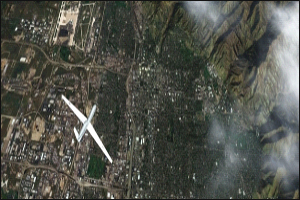|
|
|
One of today's most pressing challenges is how to effectively train unmanned aerial systems (UAS) operators
|
| |
|
The number and sophistication of unmanned land, air, and sea-based vehicles helping military forces and civilian groups has greatly risen in the last 10 years.
|
| |
|
One of today's most pressing challenges is how to effectively train unmanned aerial systems (UAS) operators for the new generation of vehicles that are currently being built for security, public safety, and scientific research purposes. When developing UAS operator training applications, simulation developers must provide operator trainees with a wide range of mission scenarios (i.e., different payloads) and high-fidelity visuals and controls that provide a true-to-life experience.
|
| |
|
As the demand for UAS’ continues to increase, so does the need for UAS subsystems. For example, it is critical that UAS ground station displays intuitively provide pilots with accurate system and flight data to ensure flight safety and mission success. Like traditional aircraft pilots, UAS pilots need to receive flight data and aircraft system information in real-time. In addition, situational awareness is critical in order to plot accurate flight paths and avoid collisions.
|
| |

|
| |
|
As UAS requirements continue to evolve in the years to come, it will be increasingly important for developers to make use of existing simulations and improve their quality, as needed, without being locked into expensive and proprietary systems and tools. Based on open industry standards, Presagis offers a wide range of software tools for the development of UAS simulation applications, including individual components such as UAS control panels, visual feeds, flight motions and dynamics, and mission scenarios.
|
| |
|
M&S Suite 13: New UAS Capabilities
|
| |
|
With the upcoming launch of M&S Suite 13—the latest release of our M&S software tools—we’ve added a variety of features to help you develop UAS simulation applications that meet today’s high-fidelity and content-rich requirements. This includes:
|
| |
-
More simulation content out-of-the-box, including new weapon types and models such as Improvised Explosive Devices (IEDs), physics-based weapons, and laser-guided bombs
-
New sensor capabilities including support for dynamic heating and cooling, laser designators, and 3D cloud decks
-
Improved terrain paging capabilities to optimize application performance
More pre-built objects out-of-the-box to rapidly create control panels and interactive displays with the necessary components
|
|
For more information, write to marketing@edstechnologies.com
|